No products in the cart.
Pal Pinto
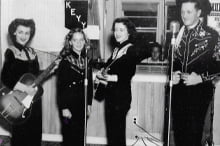
Sleuthing a Song
By P. Gary Eller
There’s another one!
In my search around our state for forgotten pre-radio (written before 1924) songs that reveal elements of early Idaho culture, I had seen several variations in lyrics and titles of the song, “Pal Pinto and Idaho.” This told me it once had enjoyed significant popularity. I was struck by its vivid imagery and although I have rediscovered hundreds of early songs, I still consider this one to be among the finest Idaho cowboy songs I’ve ever run across.
Yet despite much searching in old books, historical newspapers, libraries, and museums across the state, nowhere had I found a melody for “Pal Pinto.” So I asked my musical friend Vince Crofts, who lives in Firth, to come up with a plausible melody and arrangement and to record the song for a CD/interpretive booklet I was planning, called, The Way We Worked in Early Idaho. With help from from members of the Wild Coyotes string band and from his singing partner Mindi Reid Smith, who comes from a ranching family of long standing in southeastern Idaho, the very area where “Pal Pinto” was set, Vince produced a beautiful rendition.
There’s another one. And it’s on sheet music and it lists the songwriter and date.
After another year or two of song searching, I was amazed to find crucial additional information about “Pal Pinto.” The sheet music was dated 1922 but it is highly likely the song was composed much earlier than that. After checking historical sources, I confirmed that songwriter Bob Springer really was a southeastern Idaho singing cowboy in the early 1900s and that he rode the range described in the song. But I didn’t have a good setup at the time for recording it with the real melody so I temporarily set it aside.
I can’t believe what I just heard.
I was performing a program of early Idaho songs at the Bannock County Historical Museum in Pocatello and as usual left time afterwards for questions and answers and to give attendees an opportunity to tell me of a historical Idaho song I might not know about. A short, wiry, bow-legged man in his eighties raised his hand and said he had a song I might want to hear. He said his name was George Katseanes and he had learned the song as a kid on cattle drives in southeastern Idaho. I asked him to sing his song for me and the audience. After apologizing that he wasn’t much of a singer, he said he would give it a try. To my utter amazement, in a strong, clear, beautiful voice he sang several verses of “Pal Pinto,” using the same melody that was in the sheet music I had found. This was a musicologist’s dream. I asked George if he would sing it again so we could record it on the spot and use it in a future project, and he agreed. George’s rendition of “Pal Pinto” was included on the 2011 CD of The Way We Worked in Idaho.
Cowboy at Henrys Lake, 1921. Library of Congress.
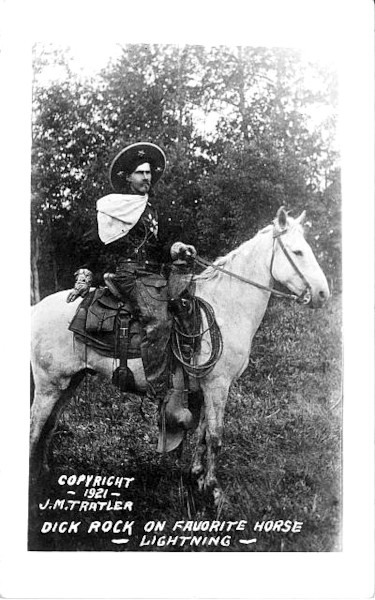
"My Pal Pinto" retitled, 1950s. Courtesy Debra Melendez.
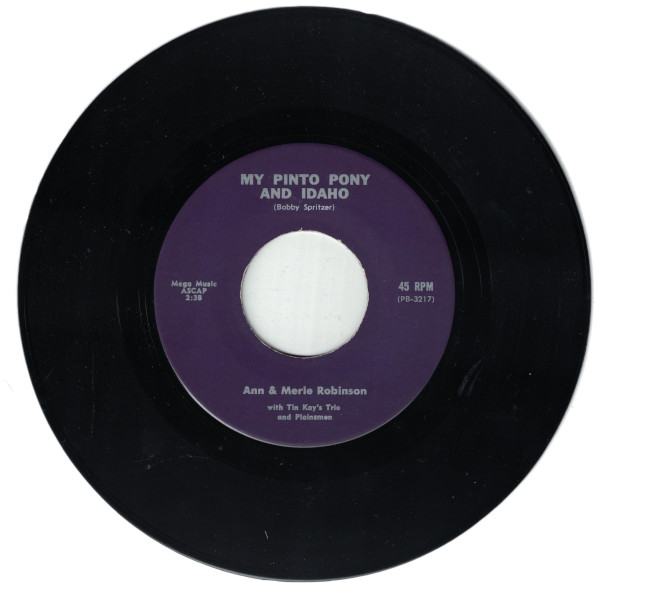
The Robinson sisters, 1950s. Courtesy Debra Melendez.
That would have been a very fitting end to the “Pal Pinto” story but it got even better. A few years after George’s rendition was published, I got a call from his grandson Kory, a music professor at Brigham Young University. Kory said that George had passed away and the family would like permission to play his rendition of “Pal Pinto” at his funeral service. I responded that the recording belonged to George’s family, not to me, and I would be honored to have it used to commemorate his life. It was a touching moment that helped to make my years of song-searching worthwhile. This, too, would have been a fitting ending to the song’s back story—but au contraire.
You’ve got to be kidding me.
A few years after George Katseanes was buried, I got a phone call from Debra Melendez in Carlsbad, California. Her mother, Merle Robinson, and Merle’s two sisters had performed as a popular singing act when they were young in the early 1950s. Debra had come across the two “Pal Pinto” recordings I had published and wanted to tell me that Merle and her sister Ann often performed that song and had even cut a 45-rpm record from a recording made at a home in Pocatello. Debra added that the song had been submitted to the governor as part of Idaho’s Territorial Centennial celebration in 1963. She offered to send me a copy of the recording, which I could hardly wait to receive. It turned out to be a fantastic example of well-performed country dance music in the classic 1950s style.
I also was surprised to learn that Debra’s mother was still alive in Pocatello. The Robinson girls were backed by a band called the Tin Kay Trio and the Plainsmen. My 2021 CD/interpretive booklet project Stock Handler Songs, Poems, and Stories of Early Idaho was about to be published, but I hurriedly made space to add the Robinson sisters’ version of “Pal Pinto.” Later I had it archived in the Special Collections at Boise State University’s Albertsons Library.
That, I suspect, really is the end of the song’s story—but you never know what the next phone call or inspection of an obscure file in a library or museum might reveal. I’ve learned to leave the door open for surprises.
The lyrics below are from the Professor Jan Brunvand Collection in the University of Idaho Library’s Special Collections Department. They were typewritten with no other notations.
Little Pal Pinto and Idaho
Give me back my pony and the range of Idaho,
Where the quakin’ asps and cedars and the service berries grow.
Let us roam the Blackfoot Mountains and the shore of old Gray Lake,
Wolverine and Tincup Valley, or where Bear Creek meets the Snake.
Little Pal, my heart is with you, out there ‘neath the star-filled skies,
Out there where the moonlight’s mellow, out there where the coyote cries.
How I miss you, Little Pinto, and I wish were (here) tonight.
Out there with you in the silence, far from this electric light.
Many nights we spent together on the Circle Lazy Eight.
Night winds whispered in the pine trees and the lone wolf called his mate.
With my saddle for a pillow and a grassy slope for you,
Where to northward were the Tetons, to the east the Caribou.
Let me trade these narrow alleys for God’s bigger out-of-doors,
Sagebrush stretches, open spaces, where the baldy eagle soars.
Take these thick polluted waters for those bubbling springs so clear.
Give me back that blue horizon for this smoke-filled atmosphere.
Let me trade these town-creased breeches for my boots and spurs and chaps,
And a roundup on the ranges where the cowgirls wear felt hats.
Give me a Meadow Creek and Pinto, far from turmoil strife and care,
For a cowboy friend is truer and there are no strangers there.
Through stone walls I see a picture, though I have a tear-dimmed eye,
It’s a painting clearly calling, calling me back home to die.
Purple distance, hazy mountain, rosy sunset, twilight glow,
Cattle lowing, horns a-clanking, and the title’s Idaho.
The author discovered the tale of this song as part of his Idaho Songs Project.
This content is available for purchase. Please select from available options.
Purchase Only
Purchase Only

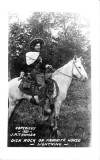
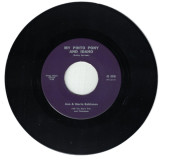
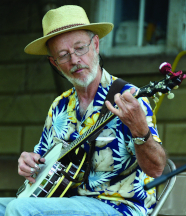
Comments are closed.